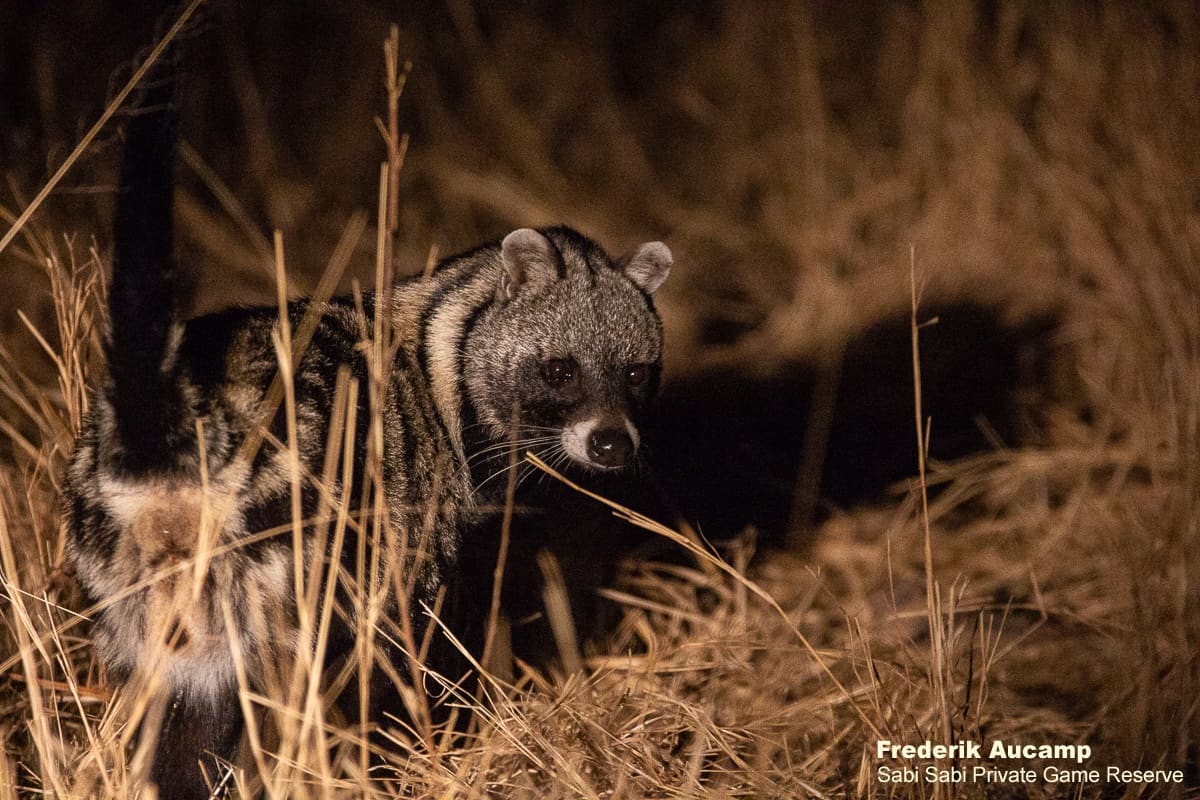African Civet
on Nov 08, 2019Species name: African Civet
Scientific name: Civettictis civetta
Weight: Male: 9,5 – 13kg Female: 9,5 - 18
Shoulder height: Male: 40cm - Female: 40cm
General habitat: They prefer thick vegetation with sufficient shelter amongst tall grass and bushes.
Diet: They will mainly eat a variety of fruits and insects but will also eat small reptiles, mammals and amphibians.

African Civets almost look like mini leopards or a cross between a racoon and a leopard. They have a cat-like appearance with an arched back and have irregular black blobs and stripes over their body.
The name ‘Civet’ comes from an aromatic substance that has a musk-like odour which is called, Civet. The Civet substance is secreted by the African Civet’s anal glands. Believe it or not, but this substance was used in the manufacturing of perfumes for decades. These days it is mostly replaced by a synthetic substance. Even though the Civet substance has been used in the past to manufacture perfume, it has a very pungent and unpleasant aroma to it. Due to this, their scent markings can stay active for as long as two to three months. They will normally use their anal glands to scent mark on smooth surfaces like rocks and tree stumps at a height of about 35cm above the ground.
African Civets are mostly active at night and will walk with its head facing downwards, sniffing the area for any potential food. If any prey is discovered, it will stalk it until it gets close enough to pounce on it. When prey is caught, it will normally bite it multiple times or even shake its prey to kill it. The prey then gets pinned down by its claws and chunks of meat will be torn off and eaten quickly.
They are very solitary, but male and females will come together to mate. After mating the female will be pregnant for about 65 days and will give birth to as many as four young. The young are normally born in underground holes or caves. They grow fast and the female will start the weaning process after about one month. Come join us on a Sabi Sabi safari and you might get to see this rare creature.
My Memorable Sighting
On one of our afternoon safaris, as we were driving back to Little Bush Camp in the dark, Zeblon, our experienced tracker, spotted something in the tall grass. I just remembered him saying, “Frederik!! Stop, Stop, Stop!” I reversed back about two to three meters and there it was, an African Civet, one of the animals we don’t get to see too often. As we were viewing this rare creature, we noticed something next to it hidden in the thick vegetation. We could not believe our eyes – three baby African Civets cuddling next to their mother. Unfortunately, we had to switch the lights off immediately after we saw them because the youngster’s eyes were still too sensitive to the light. Even though we only had a glimpse of them, that was probably be the most memorable sighting I ever had of an African Civet.
Photo Content













